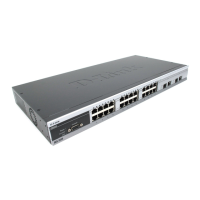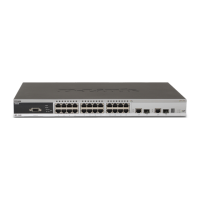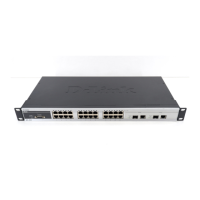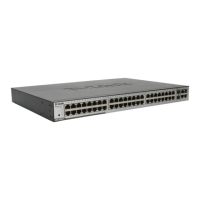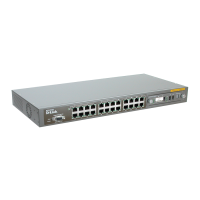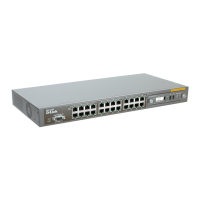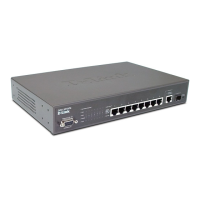DES-3550 Layer 2 Fast Ethernet Switch User’s Guide
32
to be assigned to the IP interface named System and the y’s represent the
corresponding subnet mask.
2. Alternatively, you can enter config ipif System ipaddress xxx.xxx.xxx.xxx/z. Where
the x’s represent the IP address to be assigned to the IP interface named System and
the
z
represents the corresponding number of subnets in CIDR notation.
The IP interface named System on the Switch can be assigned an IP address and subnet mask,
which can then be used to connect a management station to the Switch’s Telnet or Web-based
management agent.
Figure 4- 5. Assigning the Switch an IP Address
In the above example, the Switch was assigned an IP address of 10.53.13.175 with a subnet
mask of 255.0.0.0. The system message
Success
indicates that the command was executed
successfully. The Switch can now be configured and managed via Telnet and the CLI or via
the Web-based management.
Connecting Devices to the Switch
After you assign IP addresses to the Switch, you can connect devices to the Switch.
To connect a device to an SFP transceiver port:
1. Use your cabling requirements to select an appropriate SFP transceiver type.
2. Insert the SFP transceiver (sold separately) into the SFP transceiver slot.
3. Use the appropriate network cabling to connect a device to the connectors on the SFP
transceiver.
NOTICE: When the SFP transceiver acquires a link, the associated
integrated 10/100/1000BASE-T port is disabled.

